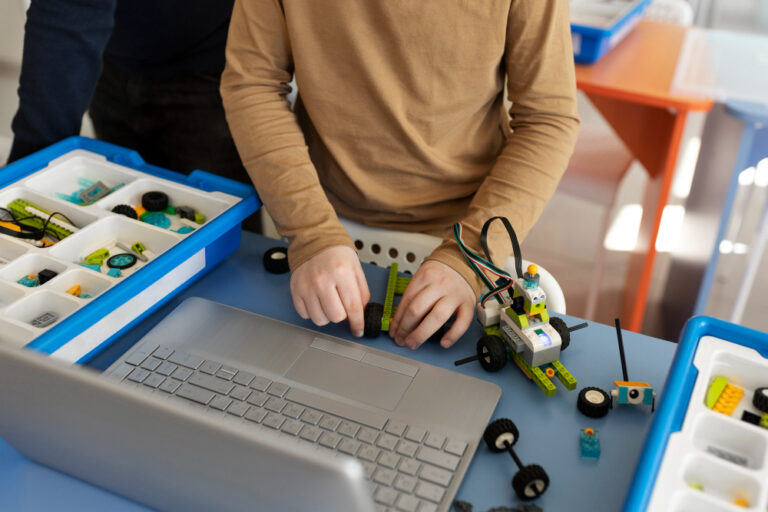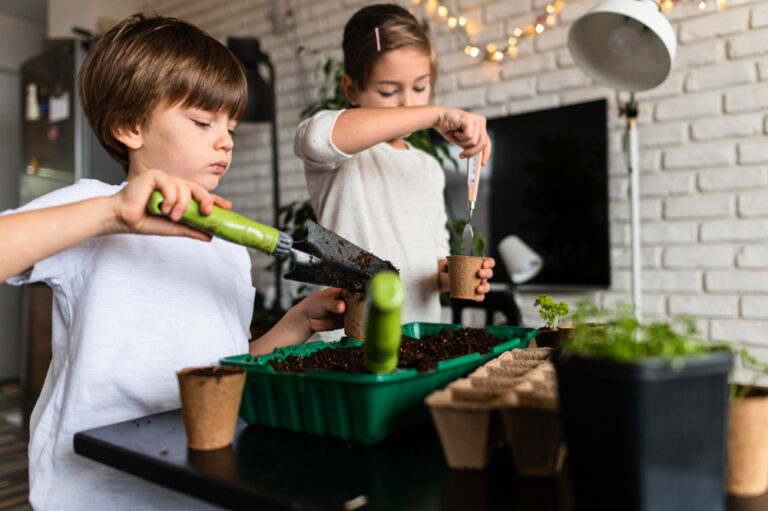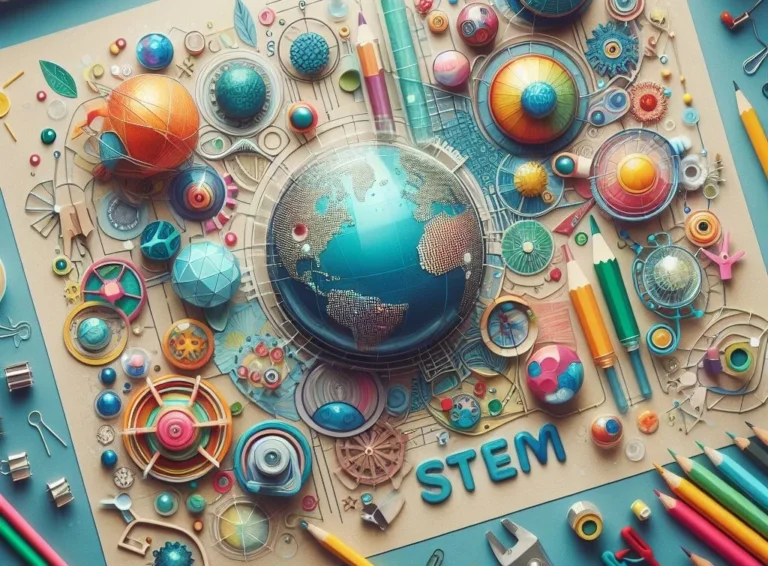Combining STEM education with the great outdoors results in an enriched learning experience in Spring. The National Wildlife Federation reveals that outdoor STEM play raises Vitamin D levels, helping protect children from future bone problems, heart disease, diabetes, and other health issues. This confluence of education, nature, and health benefits makes springtime ideal for STEM activities that captivate curious minds and encourage scientific exploration.
Stanford University’s research shows that outdoor STEM activities can improve children’s social studies, science, language arts, and math scores. By incorporating outdoor STEM projects, such as monitoring a plant’s growth or experimenting with water filtration, educators can improve the natural curiosity of students and the renewing energy of spring to create a dynamic and interactive learning experience.
Benefits of Seasonal STEM Activities for Engagement
Engaging young learners in spring break STEM fun builds a mindset geared towards innovation and inquiry. Research has consistently shown that early exposure to STEM subjects positively correlates with children’s confidence and competence in these areas, which are increasingly valued in the modern workforce.

STEM activities for kids in spring provide a unique opportunity to harmonize educational content with the natural world’s rhythms in their vacations. Observing the lifecycle of plants or the water cycle during this season makes learning tangible and relevant. This relevance fuels a student’s curiosity and promotes a more profound understanding of the subjects.
Curated Spring STEM Activities
Seasonal STEM experiments are a perfect way to engage students and spark their interest in STEM fields. Here are some examples of curated spring STEM activities:
Make a Cloud in a Jar

This spring science activity teaches students about the water cycle and the science behind cloud formation. It only requires a jar, hot water, ice cubes, and hairspray. Explore the process of condensation and cloud formation using household items such as a jar, water, and aerosol.
Build a Birdhouse

This Teen STEM challenge combines engineering and outdoor exploration. Students get to design and build a functional birdhouse using simple materials like cardboard, sticks, and glue. Encourage students to examine different types of birds in their local area and design their birdhouses accordingly. This project combines engineering with biology as students construct a home for birds while learning about their habitats and behaviours.
Create a Butterfly Garden
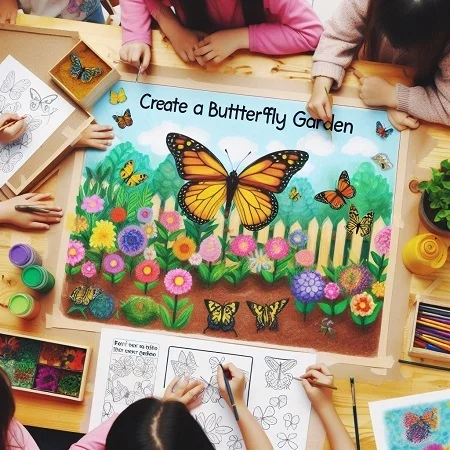
This STEM Play activity combines biology and environmental science, teaching students about pollinators and the importance of preserving their habitats. Students can research different types of butterfly-attracting flowers and plan their garden accordingly. They can also observe and document the lifecycle of butterflies as they visit their garden. This project is perfect for teaching students about pollination, the lifecycle of butterflies, and the concept of food webs.
Create a Plant Growth Chart

This activity teaches students about the lifecycle of plants and encourages them to practice data collection and charting skills. Students can monitor the growth of a plant from seed to maturity and record their observations in a chart or graph. They can also explore factors that affect plant growth, such as light, water, and nutrients. This STEM art project combines biology with math.
Dissect a Flower

This flower exploration STEM activity allows students to explore the anatomy and reproduction of plants. Using a simple flower such as a daisy or sunflower, students can carefully dissect and observe its parts, learning about pollination and plant reproduction. Encourage students to take detailed notes and sketches of their observations. This project combines biology with critical thinking skills as students analyze the structure and function of different flower parts. Investigate the other parts of a flower and their functions, and learn about plant biology by carefully taking a bloom apart.
Planting Seeds Experiment

Students can investigate the factors that affect seed germination by designing and carrying out their seed science experiments. They can explore variables such as water, light, temperature, and soil type to see how they affect the growth of seeds. This STEM project allows students to practice the scientific method while learning about plant biology.
Rainbow Flowers

This hands-on learning activity in spring combines science and art, teaching students about the process of capillary action while also creating a beautiful visual display. Students can place white flowers in the coloured water and observe as the flower petals change colours due to water absorption. They can also experiment with different types of flowers and different colour combinations to create a rainbow effect. This project is perfect for teaching students about plants. water absorption
The Water Cycle
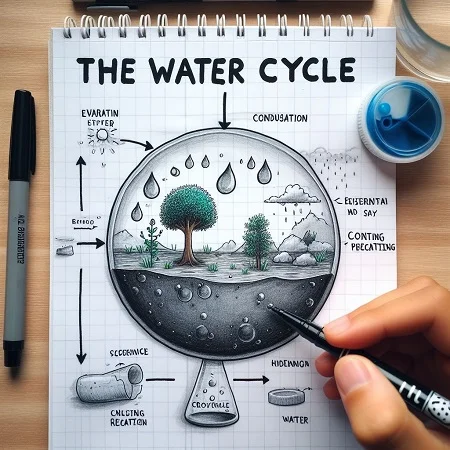
Students can learn about the cycle by creating a hands-on model. They can use basic materials like a plastic bag, water, and a black marker to create their mini-water cycle. As they observe the process of evaporation, condensation, and precipitation, they will better understand this important natural phenomenon. Encourage students to make predictions before starting the experiment and to reflect on their observations afterwards. This project combines earth science with critical thinking skills as students tangibly explore the water cycle.
Chromatography Butterfly Craft
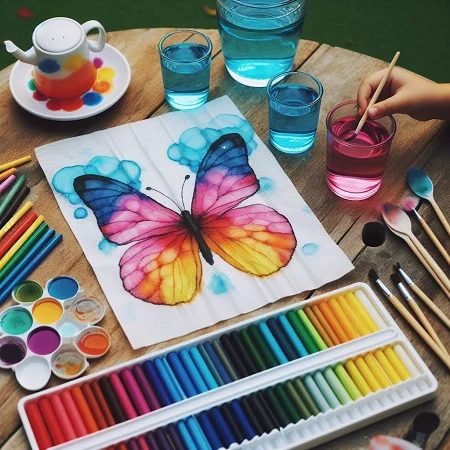
Students can learn about chromatography, separating and analyzing mixtures by creating a colourful butterfly craft. By placing coloured markers in water and then allowing the water to travel up coffee filters, students can see how different colours separate into their other components. They can then use these colourful strips of paper to create beautiful butterflies. This outdoor STEM activity combines science with art and is a great way to teach students about the properties of different substances. Using paper chromatography to separate the other marker pigments creates a unique butterfly craft.
Collect Rocks
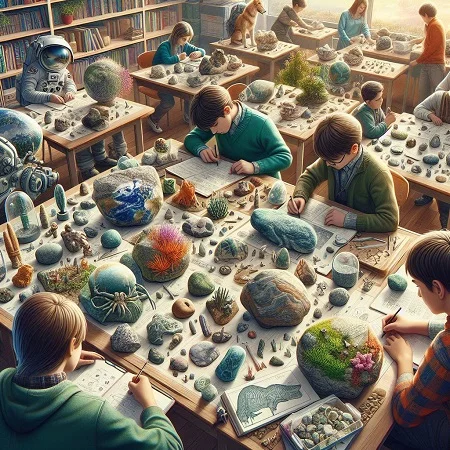
Students can explore geology by collecting and categorizing different types of rocks. They can also research the properties and origins of each rock, learning about the processes that create these natural formations. This project is a great way to teach students about Earth’s structure and how it has changed. Encourage students to display their rock collection and share their findings with classmates.
Experiment with Eggs

Students can investigate the effect of different liquids on eggshells by placing eggs in containers filled with substances like vinegar, soda, or juice. As they observe the changes in the eggshells over time, they will learn about the chemical reactions that occur and how they can affect living things. This spring hands-on activity is a fun way to teach students about acids and bases and the importance of protecting our bodies from harmful substances. Engage in experiments highlighting eggs’ unique properties, like strength under compression and the composition of eggshells.
Key Takeaways
– Spring STEM activities combine outdoor learning with health benefits, as exposure to nature enhances children’s Vitamin D levels.
– Research from Stanford University indicates that outdoor STEM activities can improve scores in various subjects and foster curiosity.
– Early exposure to STEM subjects correlates with increased confidence and competence in those areas, which is valuable for future careers.
– Seasonal activities align with natural rhythms, making concepts like plant lifecycles and the water cycle tangible and relevant.
– These activities engage students in hands-on learning, combining science, art, critical thinking, and creativity.
– Encouraging reflection and interdisciplinary connections enhances the learning experience.


